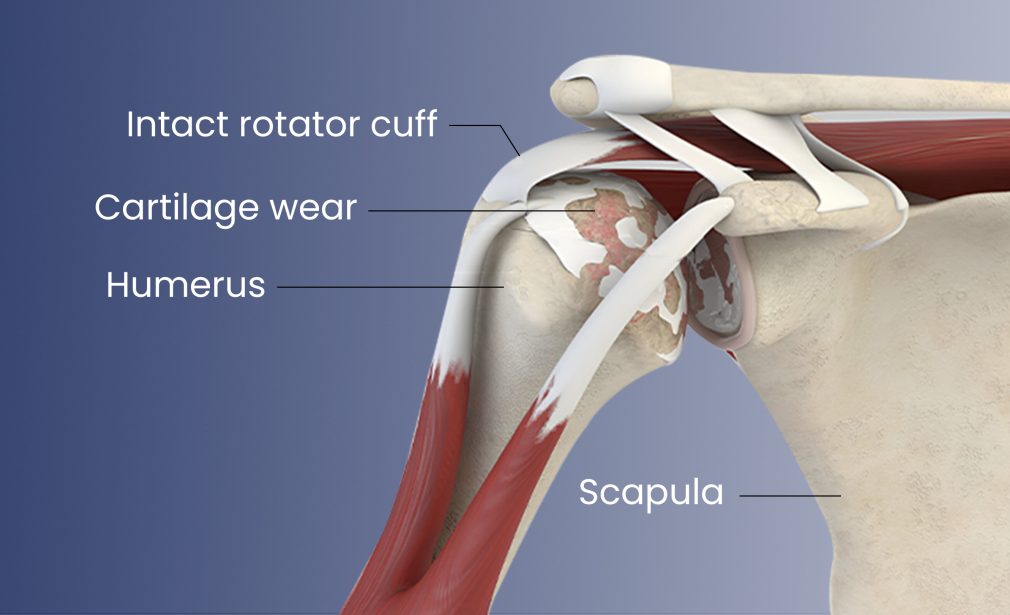Total Shoulder Replacement is a surgical procedure where the damaged parts of the shoulder joint are replaced with artificial components. It’s typically done to relieve pain and restore function in cases of severe arthritis or complex fractures.
Total Shoulder Replacement (TSR), also known as shoulder arthroplasty, is a surgical procedure in which the damaged parts of the shoulder joint are replaced with artificial components. This includes replacing the humeral head (ball) with a metal ball and the glenoid (socket) with a plastic surface.
It is commonly performed to treat severe arthritis, rotator cuff tear arthropathy, or complex fractures that cause chronic pain and loss of function. The common symptoms are:
- Persistent, often severe pain that doesn't improve with rest, medications, or injections.
- Difficulty lifting the arm overhead, reaching behind the back, or performing daily tasks.
- A feeling of tightness or "frozen" movement in the joint, especially after periods of inactivity.
- Audible or felt grinding, popping, or clicking due to worn-out cartilage or bone-on-bone contact.
- Trouble lifting or holding objects, especially with the affected arm.
- Pain that worsens at night, making it hard to sleep on the affected side.
- Mild to moderate swelling around the joint, especially after activity.
- Daily tasks like dressing, cooking, driving, or personal hygiene become difficult or painful.
Frequently asked questions
A surgical procedure where the damaged ball (humeral head) and socket (glenoid) of the shoulder joint are replaced with artificial components—typically metal and plastic implants.
Usually to relieve chronic pain and restore function caused by:
- Severe osteoarthritis
- Rheumatoid arthritis
- Rotator cuff tear arthropathy
- Fractures
- Avascular necrosis
Yes, it’s considered major surgery but is commonly performed and generally safe when done by experienced orthopedic surgeons.
Initial healing takes 6–8 weeks, but full recovery and return to most activities typically occur within 3 to 6 months.
Absolutely. Physical therapy is crucial for regaining motion, strength, and function. It often begins a few days after surgery.
Modern implants can last 15 to 20 years or more, depending on activity level and overall health.
Light activities and recreational sports (like swimming or golf) are usually allowed after recovery. Heavy lifting or contact sports may be restricted.


